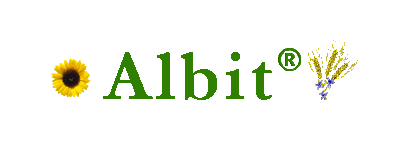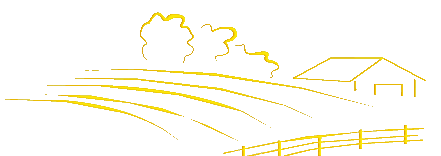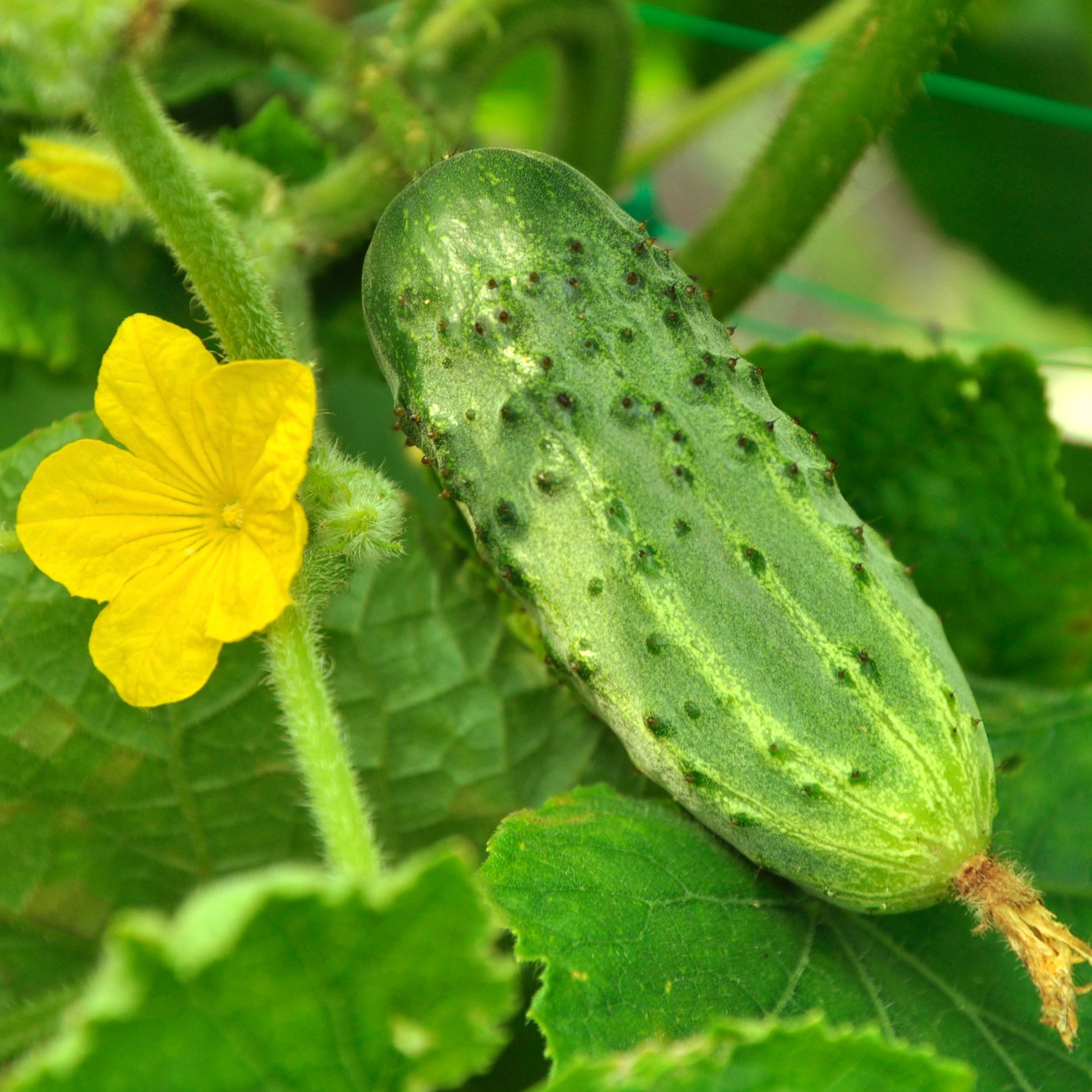|
|
Materials used in this chapter were published in the book: Biostimulant Albit for increasing yields and protection of agricultures against diseases, A.K. Zlotnikov, Ed. Prof. À. Melkumova. All-Russia Institute of Plant Protection, Russia, 2006.
Albit is used on cucumbers as an antidote (safener) to reduce the phytotoxic effect of pesticides. Albit increases field germination, increases growth and development, increases resistance to adverse environmental conditions, reduces disease damage, increases early yield and total yield, decreases the nitrate content, improves product quality. Application method. We recommend conducting a pre-sowing seed treatment and two treatments during the growing season to achieve the maximal beneficial effect. Before sowing, cucumber seeds are soaked in the working solution of Albit with a concentration of 2 ml/L of water for 3 hours. The application rate of Albit is 2 ml/kg of seeds; the working solution rate is 1 L/kg of seeds. We recommend spraying during vegetation in the 2-3 true leaves’ phase (BBCH 12-13) and 15 days later. The application rate of Albit is 30 ml/ha; the working solution rate is 300 L/ha. After planting the seedlings, we recommend watering the soil with a 1-2 ml/L water solution (this concentrated solution is applied to soil near the roots, not on plants’ leaves). Two sprays are the minimal requirement for treatments. Sometimes intensive use of chemicals is the case, especially in glasshouse conditions. If this is the case, we recommend using Albit as an antidote (safener) every 1-2 weeks alongside the routine pesticide treatments (up to 10 per growing season) at a working solution rate of 1-2 ml/10 L (or 30-120 ml/ha). Albit can also be applied through drip irrigation: 2 ml/10 L of product is added to the irrigation system and supplied until the final rate of 1 L of Albit per hectare is reached (three times in the first half of the growing season). Similarly, a solution of 1-2 ml/10 L can be used for regular irrigation instead of water (the solution should wet the plants’ leaves). Albit has been used on cucumbers in Russia (Leningradskaya Plant Protection Station, Federal Scientific Center for Vegetable Growing, All-Russian Research Institute of Plant Protection, Far Eastern Scientific Institute of Agriculture, other institutes and farms), China, Spain, Romania, the USA, and other countries. The tested cucumber varieties include Zozulya, Marinda, Izyashchnyj, Elektron, Atlet, Khabar, Urano, Mastil, Cornistar, Vlaspik, and others. In 2001, the effect of Albit on greenhouse-grown cucumbers was tested in the agricultural production cooperative ‘Shushary’ of the Leningrad Regional Plant Protection Station. Cucumber crops var. Zozulya and Marinda were grown in plastic greenhouses. Crops were sprayed with Albit three times (50 ml/ha), starting at the beginning of flowering. Albit treatments commenced later than recommended (at 2-3 leaves’ phase). There was a 2.7 kg/m2 increase in the yield of cucumbers var. Zozulya in the Albit group (+34.2% to average 7.9 kg/m2 in control). No significant increase in yield of var. Marinda was noted. In 2002, greenhouse-grown cucumbers var. Marinda cucumber were tested at the same production cooperative. Crops were sprayed with Albit four times (100 ml/ha), starting at the beginning of flowering. Treatment did not comply with the approved application recommendations, which affected Albit’s effectiveness. The yield increase in Albit group was 0.5 kg/m2 (+8.1% to average 6,2 kg/m2 in control). In 2001-2003, the Federal Scientific Center for Vegetable Growing in the Moscow Oblast conducted trials on cucumbers var. Izyashchnyj and Elektron. Albit was used in pre-sowing soaking of seeds and three sprayings during the growing season. Seedlings were grown in greenhouses, then planted in open ground. Albit significantly increased the seed germination (up to +12% to control), contributed to a 10-15% increase in the number of female flowers and absence of damage from powdery mildew, increased turgor pressure, improved drought tolerance. Albit increased the yield by avg. 23-26.7% for var. Izyashchnyj and 28% for var. Elektron. The nitrate content in cucumber decreased by avg. 16% (compared to control). When it comes to economic and biological efficiency, the effect of Albit was similar to that of the standard fertilizers with epibrassinolide and Pseudomonas aureofaciens. In 2006, the All-Russian Research Institute of Plant Protection conducted an trial on glasshouse-grown cucumber hybrid var. Atlet. Albit was applied twice by spraying during the growing season. Results showed a 1.28 kg/m2 increase in yield (+4.2%), with a 288 rate of return. In 2016, the Far Eastern Institute of Agriculture evaluated the effectiveness of Albit on cucumbers var. Khabar in the Middle Amur region. The seeds of cucumbers were soaked in Albit solution before sowing and then twice sprayed with Albit during the growing season. Albit facilitated a decrease in the development of downy mildew and plant canker (anthracnose); Albit treatment group had an increased number of vines, healthy green leaves, and a 2.71 t/ha yield increase (+12.6% to control). The marketability of cucumbers reached 95.6%, which was 5.9% higher than in control. Albit is effectively used as an antidote (safener) to reduce the phytotoxic effect of pesticides and as an antistressant (stress-relief product) for crops to cope with adverse environmental conditions (drought, frost, etc.). For example, in 2011, Albit stimulated the recovery of cucumbers weakened by high temperatures in greenhouse farms in China (Fig. 1). In 2012-2013, the restorative effect of Albit was demonstrated on cucumbers affected by frosts. At farms in China, the frost-damaged crops were treated with Albit twice with a 7-day interval. Plants completely recovered 15 days after the treatment. The yield was 30% higher than the one from other farms that grew cucumbers in similar conditions but without Albit. In 2014, on a farm in the same district, the increase in cucumber yield treated with Albit amounted to 7.425 t/ha (+50.1% to control). The ripening period reduced from 15 days to 7-10; cucumbers increased in size; physical characteristics and flavor of cucumbers improved; the powdery mildew infection decreased by 30-40%.
Fig. 1. Albit contributes to the recovery of greenhouse-grown cucumbers after high-temperature damage (Xiaolongma farm, Yongqing County, Hebei province, China, 2011). ‘Untreated area’ - plants without Albit treatment; ‘Treated area’ - plants treated with Albit; ‘Treated result’ - the result of Albit treatment
In 2013, a well-known Spanish company Meristem used Albit on greenhouse-grown cucumbers var. Urano. Crops were sprayed with Albit four times with a 2-week interval. As a result, a 29.6% yield increase was obtained (to 74.7 t/ha in control) (Fig. 2).
Fig. 2. Cucumbers grown with Albit in Spain (Moncada municipality, Valencia, Spain, 2013)
In 2016, in Spain as well, Albit was used on greenhouse-grown cucumbers var. Mastil at the Jose Fernandez Martin farm (Balerma, Almeria). In the adverse conditions of high temperatures and lack of moisture, Albit was used in weekly sprayings, starting from the 4-5 leaf stage. Treatments stimulated above-ground development, increased plant resistance to high temperatures and a lack of moisture, and gained a 50 kg/ha increase in yield (+11.8% to 475 kg/ha in control). Whitefly was a threat to cucumber crops, and a parasitic wasp Encarsia farmosa was used to target it. Albit treatments did not obstruct the auxiliary insects and did not have any negative effect on them. In 2014, the Romanian University of Agricultural Sciences and Veterinary Medicine in Iasi conducted trials to study the effect of Albit on cucumbers var. Cornistar. Cucumbers were grown in greenhouses with the drip irrigation system. Crops were watered three times with Albit solution at a rate of 1 L/ha. As a result, a 10.247 t/ha yield increase was obtained (+31.6% to control, or 3475 kg of extra yield per liter of Albit). In 2014, Albit was tested at the Danford farm (Alabama, USA) on cucumbers grown on the open ground. Albit was used in the pre-sowing seed-soaking treatments and two sprays during the crop growth. A 100% seed germination rate was observed (50% in control), as well as the development of a vigorous root system, accelerated plant development, and a 30% yield increase (Fig. 3).
Fig. 3. a) Albit increases the germination rate and seed vigor in cucumbers var. Vlaspik, promotes root system development; b) Albit accelerates the growth and development of cucumbers. ‘Cheñk’ - control, ‘Treated’ - Albit treatment (Danford farm, Alabama, USA, 2014).
In recent years, viral plant diseases have become increasingly threatening to crops worldwide. Traditional fungicides are not effective against viral diseases. However, these diseases can be targeted by new generation immunizing fungicides (elicitors) such as Albit. The trials at greenhouse farms in Greece demonstrated the protective effect of Albit against the CYSDV virus on cucumbers. Albit treatments suppressed the virus development for 4 to 6 weeks. The immunizing, regenerating effect of Albit also allows the product to increase the resistance of vegetables to nematode-induced damage. According to data of the All-Russian Research Institute of Biological Plant Protection of the Ministry of Agriculture of Russia, biological efficiency of Albit against root-knot nematodes after pre-sowing seed treatment of cucumbers was 48.8%. This property of Albit can be explained as follows. It is known that immunizers like Albit that can induce plant resistance to pathogens and stresses can promote cross-resistance to other stresses. It is also established that with Albit plants can quicker recover from mechanical damage. The results of trials that tested the effect of Albit on cucumbers are presented in Tables 1 and 2. Table 1. Results of field trials which studied the effect of Albit on cucumbers
Table 2. Trial reports of studies that examined the effectiveness of Albit on cucumbers. The trials in the table are sorted by year in descending order, and within each year, by region in alphabetical order
|
|
||||||||||||||||||||||||||||||||||||||||||||||||||||||||||||||||||||||||||||||||||||||||||||||||||||||||||||||||||||||||||||||||||||||||||||||||||||||||||||||||||||||||||||||||||||||||||||||||||||||||||||||||||||||||||
Terms and Conditions
|
|


 Cucumber is a widely cultivated vegetable plant of the Cucurbitaceae (gourd) family. Cucumbers are high in complex organic substances that play an important role in metabolism, stimulate appetite, promote the absorption of food, and improve digestion. Cucumbers consist of 95-97% water and a small amount of proteins, fats, and carbohydrates. The remaining 3% are chlorophyll, carotene, vitamins PP, C, and B, macroelements and trace elements, potassium and magnesium. Potassium in cucumbers improves heart and kidney function.
Cucumber is a widely cultivated vegetable plant of the Cucurbitaceae (gourd) family. Cucumbers are high in complex organic substances that play an important role in metabolism, stimulate appetite, promote the absorption of food, and improve digestion. Cucumbers consist of 95-97% water and a small amount of proteins, fats, and carbohydrates. The remaining 3% are chlorophyll, carotene, vitamins PP, C, and B, macroelements and trace elements, potassium and magnesium. Potassium in cucumbers improves heart and kidney function.





